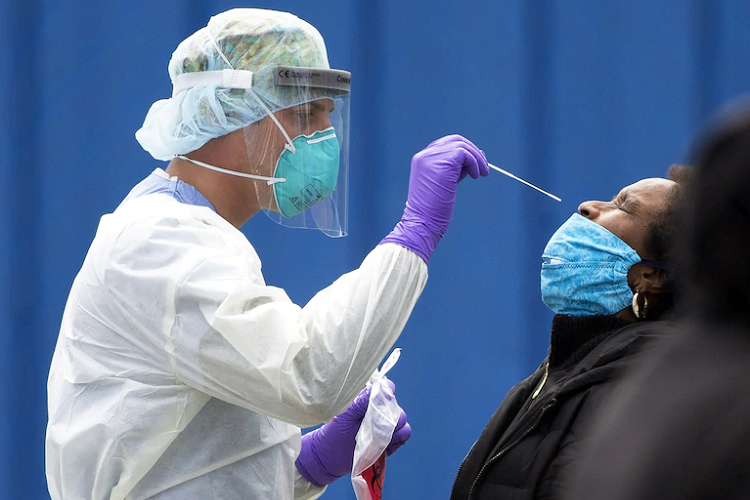The coronavirus spreads in close quarters
Dr Muge Cevik is an Infectious Diseases and Virology Clinician and is a researcher from the School of Medicine. In this piece for the The Washington Post, Dr Cevik writes about how and where Covid-19 spreads and the factors that should be considered when considering easing of lockdown restrictions.
Muge Cevik MD MSc MRCP(UK) is a CSO clinical academic fellow in infectious diseases and medical virology and medical advisor for an international clinical trial on shortening drug-resistant tuberculosis treatment. She is an active member of the British HIV Association (BHIVA) External Relations Subcommittee; Trainee Association of European Society of Clinical Microbiology and Infectious Diseases (ESCMID); ERASMUS funded Infectious Diseases European and African Learning Programme; and Chair of the UK-wide Trainee Association in HIV Medicine.
Her research interests focus on HIV, tuberculosis, viral hepatitis, emerging infections and tropical infections in LMICs. She provides scientific input to the Chief Medical Officer for Scotland on Covid-19, and provides expert input to the WHO Information Network for Epidemics about Covid-19 related infodemic.

The coronavirus spreads in close quarters. That should factor into reopening decisions.
How do you catch or spread the coronavirus? Much has been said about keeping six feet away and avoiding someone’s cough or sneeze. That’s fine, but additional evidence is surfacing about how the virus is transmitted, a key question for reopening decisions. Studies drawn from completed contact tracing — tracking down all those an infected person came into contact with — are showing that sustained, close contact and close quarters are the biggest risks.
Muge Cevik, a physician and scientist at the School of Medicine in the University of St Andrews, who examined a series of contact tracing studies, found increased rates of infection in enclosed and connected environments, including households, long-term care facilities, churches, public transit and homeless shelters, among others. She said casual, short interactions appear not to be the main drivers of the pandemic, but family and friends are.
For example, 2,147 close contacts of 157 coronavirus cases were examined in Ningbo, Zhejiang province, south of Shanghai. The researchers found higher risks of infection for friends, family and relatives; also, higher rates of infection among those living with the infected person or taking the same transit or dining together. In another China study, based in Shenzhen, 1,286 close contacts of 391 virus cases were tracked; again the finding was that “household contacts and those traveling with a case were at higher risk of infection”.
In Chicago, public health authorities in February and March investigated a large cluster of illness among multiple families. The spread of the virus began at a funeral. A close friend of the deceased, who was infected and experiencing “mild respiratory symptoms”, spent hours with the family, sharing a “potluck-style” meal and embracing family members. Three days later, still feeling the mild symptoms, the close friend went to a birthday party attended by nine other family members. There were hugs and shared food. Researchers concluded the initial case “likely triggered a chain of transmission that included 15 other confirmed and probable cases” after the funeral and birthday party, and “ultimately resulted in three deaths”.
Illustrating the risks of tightly enclosed spaces, researchers examined the case of an infected Englishman, who had recently been in Singapore, and in January stayed at a chalet in the French Alps with ten other British tourists, and a British family of five who lived in France. Of these 16 people, 12 were later found to be infected, for an overall virus attack rate of 75 percent in the chalet. In Boston, when 408 residents of a homeless shelter were checked from 28 March to 1 April, 147 were positive for the coronavirus.
All of these examples suggest that the virus spreads when and where people are congregating, and among households, family and close contacts. This insight must be taken into account for every decision about opening up the country. The problem of breaking the virus chains of transmission remains urgent and incomplete. Until a vaccine or therapy is ready, social distancing, isolating the sick, wearing face masks and constant hand-washing are absolutely necessary. Such are the sad lessons of a Chicago funeral and birthday party.
First published in the The Washington Post on 12 May 2020.
Issued by the University of St Andrews Communications Office.